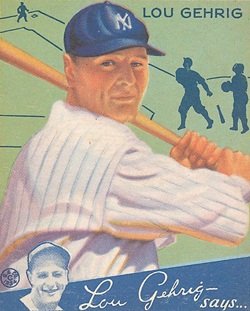
Give me an E? Clinicians first turned to the antioxidant vitamin E in the 1940s in hopes to help Lou Gehrig take a swing against the disease.
Mitochondria generate the fuel our bodies need. And, help our muscles to move. But in people with ALS, these intracellular power plants malfunction - contributing to motor neuron destruction and paralysis.
A growing number of clinicians are turning to antioxidants in hopes to protect mitochondria in people with ALS. And, help keep their muscles moving.
But no nutritional supplement or vitamin tested in the clinic to date appears to slow the progression of the disease.
Some scientists suspect that antioxidants may be ineffective in people with ALS because they are unable to be delivered where they are needed most – the power plants of glia and motor neurons in the brain and spinal cord.
Many existing antioxidants are unable to reach the central nervous system. And, many more are unable to gain access to the control room of these power stations in any tissue due to their inherent chemical nature.
Scientists are now beginning to understand how certain substances bypass these security checkpoints in mitochondria. And, are using these same strategies to develop medicines to protect these power plants in people with the disease. But there is much work that needs to be done to put these drugs on ALS clinics' shelves.
A delivery issue?
In the late 1990s, clinicians turned to the antioxidant coenzyme Q10 (CoQ10) in hopes to treat ALS. The strategy aimed to keep the power on in the central nervous system by reducing levels of free radicals that damage mitochondria in people with the disease.
The nutritional supplement is often used to help boost energy levels in people with certain kinds of mitochondrial diseases.
CoQ10, however, appeared to be ineffective in people with ALS – even at high doses according to a phase II randomized placebo-controlled study led by neurologist Petra Kaufmann MD, now at the National Institutes of Health.
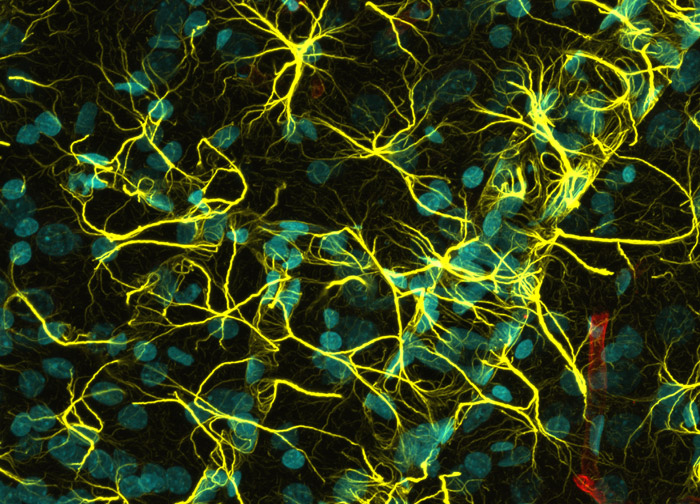
Crossing the divide? Reaching the brain and spinal cord is a considerable task for many antioxidants. MitoQ, however, appears to be able to penetrate the blood brain barrier - albeit at reduced levels. Image: Madelyn May, now at Regeneron Pharmaceuticals.
People taking up to 2.7 grams of CoQ10 daily experienced no significant difference in progression rate. And, reported no significant improvements in quality of life versus those taking placebo.
CoQ10 is one of at least 5 antioxidants found to be ineffective in people with ALS. And, one of more than 5 that failed to be of benefit to people with Alzheimer's disease or Parkinson's disease.
One reason these potential treatments may be unsuccessful according to Medical Research Council’s Michael Murphy PhD is that these drugs may not reach mitochondria in damaged tissues.
Many of these potential medicines are kept out of the nervous system due to their inability to cross the blood brain barrier. And, others simply circulate in the bloodstream and are eliminated.
New delivery vehicles may need to be developed to target these potential medicines to these power plants. And, keep them there. “This is where we focused,” says Murphy. “It was clear most drugs weren't going to mitochondria.”
In 2003, Murphy’s team introduced a strategy in which he hoped to do just that. The plan: Tack on a special positive charge that enables these drugs to get into these power plants and stay there.
The approach, created in collaboration with chemist Robert Smith PhD at the University of Otago in New Zealand, takes advantage of the inherent negatively-charged nature of mitochondria’s outer defenses - known as the mitochondrial membrane potential – to enable the drug to accumulate in these intracellular power plants at potentially therapeutic levels.
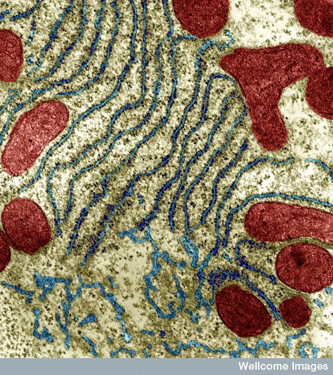
Power bar? By delivering medicines directly to mitochondria, researchers hope to keep the energy flowing in the nervous system of people with the disease. Image: University of Edinburgh, Wellcome Images.
Now, Murphy’s team is using this strategy to create next-generation mitochondrial medicines. One emerging antixoidant, a streamlined version of CoQ10 known as MitoQ, is now being investigated as a potential treatment of a growing number of neurodegenerative diseases – including ALS.
A research team, led by Universidad de la República’s Rafael Radi PhD and Institut Pasteur’s Luis Barbeito PhD in Uruguay, found that the drug appeared to reduce motor neuron loss by about 50% and significantly extended survival of a G93A SOD1 mouse model of the disease.
These studies remain ongoing.
MitoQ is one of a growing number of drugs that aim to deliver antioxidants to the mitochondria themselves in hopes to make a bigger difference for people with neurodegenerative diseases.
Stealth Peptides’ Bendavia, now at phase IIB for heart and kidney disease indications, is now at the preclinical stage in neurologic diseases including ALS. And XJB-5-131, developed by a research team led by Lawrence Berkeley National Laboratory’s Cynthia McMurray PhD is currently being developed at the preclinical stage as a potential treatment for Huntington’s Disease.
“These antioxidants are neuroprotective,” says Weill Cornell Medical College's Flint Beal MD. “They protect mitochondria [in neurons] from damage.”
On target?
With the failure of Biogen Idec's dexpramipexole and Trophos olesoxime looming large, however, a growing number of scientists are beginning to doubt whether a power outage in the central nervous system is a key contributor to the disease.
More than 10 potential treatments targeting mitochondria have been tested in the clinic to date. Not one of these experimental medicines has been shown to be of benefit to people with ALS.
A power failure may simply be a consequence not a cause of the disease.
"I am beginning to wonder whether mitochondria are a target in ALS," says Johns Hopkins University School of Medicine neuroscientist Lee Martin PhD.
Timing is everything
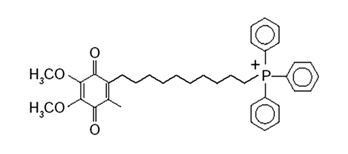
Avenue Q? The antioxidant MitoQ appears to be ineffective in reducing the progression of Parkinson's disease. But according to co-developer Michael Murphy PhD, MitoQ may not have been administered early enough to be effective.
Peering into the muscles of people with ALS in the 1990s, Tokyo Women’s College’s Shoichi Sasaki MD in Japan and Universitätsklinikum Magdeburg’s Stefan Vielhaber MD in Germany quickly put their fingers on a potential contributor to the disease: a power failure.
Alterations in at least three proteins needed to produce energy or maintain its production appear to contribute ALS. One of these proteins, CHCHD10, according to resulted reported this month by Institute de Recherche sur le Cancer et Viellissement's Véronique Paquis-Flucklinger MD in France, is mitochondrial in origin and linked to both ALS and FTD.
How exactly these power plants go offline remains unclear. But according to preclinical studies led by neuroscientist Mark Gurney PhD, now at Tetra Discovery Partners, the power may begin to flicker in the central nervous system before the first signs of ALS. And, contribute to the onset of the disease.
What's more, according to preclinical studies led by Weill-Cornell Medical College's Jordi Magrane PhD, these power problems may occur at the nerve terminals - where the motor neurons connect to muscle fibers - at least in SOD1 forms of the disease.
People with ALS may need to be identified much earlier in the disease course for these mitochondrial-targeted treatment strategies to be effective.
Tools to diagnose people with ALS more quickly, however, are beginning to emerge.
Brain imaging techniques, being developed by University of Miami’s Michael Benatar MBChB PhD MS and University of Oxford’s Martin Turner MBBS PhD MA, are beginning to detect key changes in people at high risk for ALS – before developing the disease. And, neuromuscular ultrasound methods, being developed by Duke University’s Lisa Hobson-Webb MD, University of North Carolina’s Michael Cartwright MD in the US and UMC St Radboud University Nijmegen Medical Centre neurophysiologist Sigrid Pillen MD PhD in the Netherlands may expedite diagnosis while minimizing the need for EMG.
What's more, a brain test, developed by Neuroscience Research Australia’s Matthew Kiernan MBBS PhD ScD and Steve Vucic PhD, might help clinicians diagnose people with ALS months before the first signs of the disease. And, help rule out outwardly similar disorders. The test, known as transcranial magnetic stimulation (TMS), could be available as early as the end of 2014.
"We are hopeful if we can get in early enough, we can slow down the progression or stabilize the disease," says Michael Murphy PhD.
***
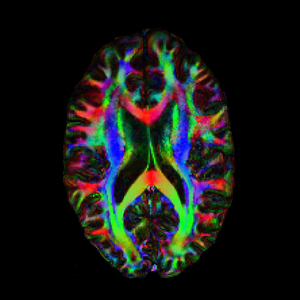
Brainstorming ALS Emerging magnetic resonance imaging (MRI) techniques may enable clinicians to identify people at high risk for ALS that will actually develop the disease. Image: PLoS One.
Since the 1990s, more than 10 potential mitochondrial-targeted medicines have been tested in the ALS clinic. No treatment to date has been found to be effective.
Potential energy booster dexpramipexole and potential mitochondrial brace olesoxime failed at phase III. And, nutritional supplements including CoQ10 do not appear to be effective.
With the discovery of underlying mechanisms that repair and replace power plants at distal axons and new insights into why existing ones go out of service, new treatment strategies are beginning to surface. Next-generation antioxidants are beginning to emerge that may protect them from free radical uprisings. And, delivery ‘vehicles’ are being developed to get these potential medicines to where they are needed most.
With the introduction of Awaji criteria and other emerging tests to help diagnose people with ALS more quickly, the next generation of mitochondrial-medicines according to Michael Murphy PhD is poised to have a fighting chance to make a difference for people with the disease.
"What we really want to know is what is going wrong with mitochondria," says Murphy. "Then, we will be able to design better drugs to target them."
References
Miguel, E. et al. (2014) Neuroprotective effects of the mitochondria-targeted antioxidant MitoQ in a model of inherited amyotrophic lateral sclerosis. Free Radical Biology and Medicine 70, 204-213. Abstract | Full Text (Subscription Required)
Kaufmann, P. et al. (2009) Phase II trial of CoQ10 for ALS finds insufficient evidence to justify phase III. Annals of Neurology 66(2), 235-244. Abstract | Full Text
Smith, R.A, Porteous, C.M., Gane, A.M. and Murphy, M.P. (2003) Delivery of bioactive molecules to mitochondria in vivo. Proceedings of the National Academy of Sciences 100(9), 5407-5412. Abstract | Full Text
Further Reading
Pollari, E., Goldsteins, G., Bart, G., Koistinaho, J. and Giniatullin, R. (2014) The role of oxidative stress in degeneration of the neuromuscular junction in amyotrophic lateral sclerosis. Frontiers of Cellular Neuroscience 8, 131. Abstract | Full Text
Smith, R.A., Hartley, R.C. and Murphy, MP. Mitochondria-targeted small molecule therapeutics and probes. Antioxidants & Redox Signaling 15(12), 3021-3038. Abstract | Full Text (Subscription Required)